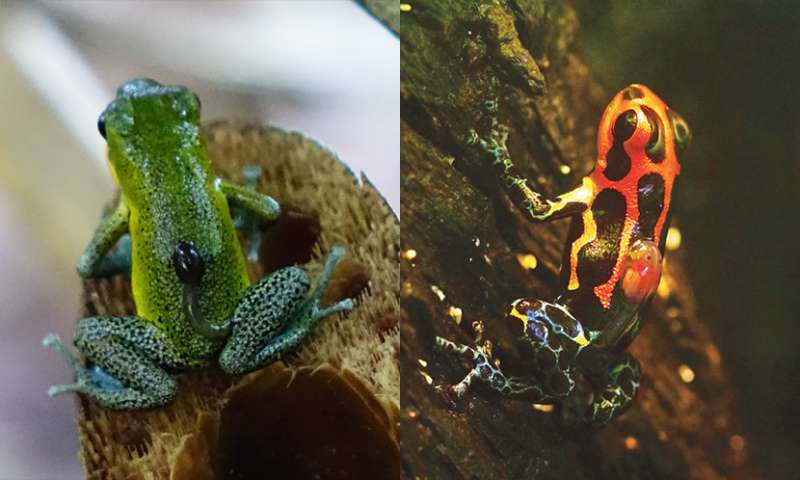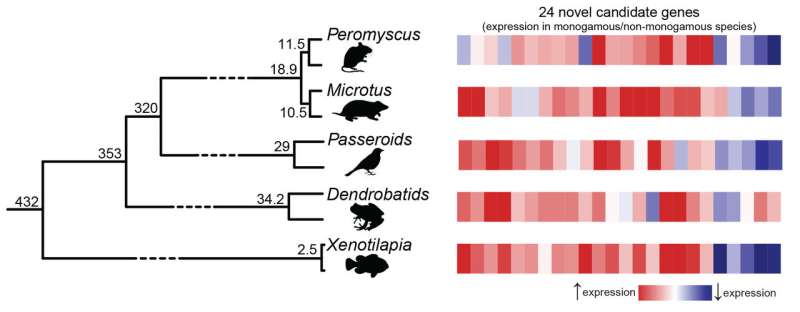Evolution used same genetic formula to turn animals monogamous

Why are some animals committed to their mates and others are not? According to a new study led by researchers at The University of Texas at Austin that looked at 10 species of vertebrates, evolution used a kind of universal formula for turning non-monogamous species into monogamous species—turning up the activity of some genes and turning down others in the brain.
"Our study spans 450 million years of evolution, which is how long ago all these species shared a common ancestor," said Rebecca Young, research associate in UT Austin's Department of Integrative Biology and first author of the study published today in the journal Proceedings of the National Academy of Sciences.
The authors define monogamy in animals as forming a pair bond with one mate for at least one mating season, sharing at least some of the work of raising offspring and defending young together from predators and other hazards. Researchers still consider animals monogamous if they occasionally mate with another.
The researchers studied five pairs of closely related species—four mammals, two birds, two frogs and two fish—each with one monogamous and one non-monogamous member. These five pairs represent five times in the evolution of vertebrates that monogamy independently arose, such as when the non-monogamous meadow voles and their close relatives the monogamous prairie voles diverged into two separate species.

The researchers compared gene expression in male brains of all 10 species to determine what changes occurred in each of the evolutionary transitions linked to the closely related animals. Despite the complexity of monogamy as a behavior, they found that the same changes in gene expression occurred each time. The finding suggests a level of order in how complex social behaviors come about through the way that genes are expressed in the brain.
This study covers a broader span of evolutionary time than had been explored previously. Other studies have looked at genetic differences related to evolutionary transitions to new traits, but they typically focus on animals separated by, at most, tens of millions of years of evolution, as opposed to the hundreds of millions of years examined with this study.
"Most people wouldn't expect that across 450 million years, transitions to such complex behaviors would happen the same way every time," Young said.
The paper's other UT Austin authors are senior author professor Hans Hofmann and professor Steven Phelps. Researchers examined gene activity across the genomes of the 10 species, using RNA-sequencing technology and tissue samples from three individuals of each species. The scientists detected gene-activity patterns across species using bioinformatics software and the Texas Advanced Computing Center's Wrangler data-intensive supercomputer. Arranging genes from distantly related species—such as a fish and a mammal—into groups based on sequence similarities, the team was able to identify the common evolutionary formula that led to pair bonds and co-parenting in the five species that behave monogamously.
More information:
Conserved transcriptomic profiles underpin monogamy across vertebrates, Proceedings of the National Academy of Sciences (2019).
www.pnas.org/cgi/doi/10.1073/pnas.1813775116
Journal information: Proceedings of the National Academy of Sciences
Provided by University of Texas at Austin


















